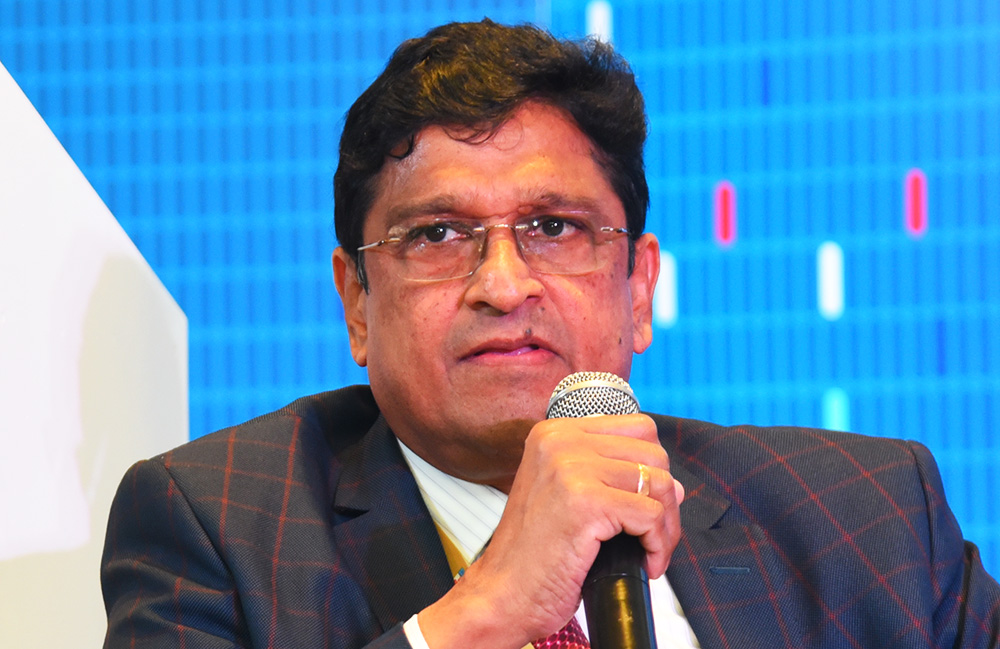A reduction in plastic waste can be achieved by adopting a circular economy approach focused on the 3Rs - Reduce, Reuse, and Recycle.
Today, plastic plays an intrinsic part in our daily lives. Its versatility, durability, and low cost make it an ideal material for packaging, transportation, construction, and consumer goods. Rapid urbanization has made plastic one of the most widely used materials in the world. Over the years, plastic consumption in India has grown significantly, aided by population growth, urbanization, innovations in packaging, and consumerism. As per reports, the country consumed nearly 20Mn tonnes of plastic in 2019-20, growing at a CAGR of 10%. However, this has presented a significant challenge with the doubling of plastic waste between 2016-20.
All stakeholders must unite to create a sustainable solution to the plastic waste problem. We need to build awareness about the value of used plastic, build a circular economy, and create a behavioral change from the use-and-throw culture. India is known for its innovative response to challenges, and we could also learn from practices across the globe. While plastic pollution presents itself as a problem, there is great potential to generate immense value if the issue can be addressed comprehensively.
It is time to reinvent traditional linear modes of using plastic. The durability of plastic is a liability in terms of waste management. It starts by using energy-efficient production processes that release fewer toxins, designs that use less material, or that enable reuse. Also, using cost-effective models in the logistics of plastic waste collection. The next step is creating awareness among people about the proper way to sort, dispose of and recycle plastics, eliminating the dumping of used plastic in landfills and water bodies.
A reduction in plastic waste can be achieved by adopting a circular economy approach focused on the 3Rs – Reduce, Reuse, and Recycle. Reducing is about better designs and using less material. While reuse is about enabling repeated use, recycling is extracting value from waste and converting it into a renewable resource. Reimagining the life of plastic can tackle waste accumulation.
Packaging is one of the largest areas of plastic use. Ease of recyclability must become a critical factor in packaging. Regulations on single-use plastics are creating a positive impact. It is interesting to note that Bangladesh has successfully implemented a complete ban on plastic bags for over a decade. Evaluation of alternate packaging solutions must be viewed in terms of overall carbon footprint and recyclability. For e.g., the high cost of raw materials and lack of industrial composting facilities are barriers to adopting bioplastics. There are also concerns about biodegradable additives leaving harsh chemicals in soil, impacting the environment. Also, recycling becomes challenging in the case of a mix-up of plastic from different sources & properties.
Mixed waste dumping is possibly the biggest issue. The challenge is to create a behavioural change in the way we dispose of used plastic. This can be achieved through school programs and public awareness campaigns. There is little public awareness about the value of used plastic. For e.g., old newspapers are sold for INR 8, but PET bottles can fetch INR 15-20 per kg! While India has a robust mechanism of waste collectors and recyclers, we still allow used plastic to reach landfills. Municipal collection agencies should enable better segregation of used plastic. There is a need for training waste collectors in the informal sector. Providing appropriate recycling bins in public places will cultivate the habit of people disposing of waste correctly. Digital technology can support connecting users and waste collectors effectively.
To truly progress towards a circular economy, it is essential to implement structural changes and develop innovative material-recovery systems. Norway is one of the best examples to have implemented a nationwide deposit system for plastic bottles and cans, encouraging recycling and reducing litter. The country aims to make all plastic packaging recyclable or reusable by 2030. Whereas Germany has set a goal of recycling 65% of plastic packaging by 2025 and reducing the use of single-use plastics. The country has also created a robust recycling infrastructure, with over 10,000 recycling points for plastic packaging.
India has taken aggressive steps toward achieving circular economy goals. It has implemented several policies to promote recycling, such as the Plastic Waste Management Rules 2016. It mandates the segregation of waste at source and imposes penalties on littering and open burning of garbage. Our country also has an Extended Producer Responsibility (EPR) policy, which requires the producers, importers, and brand owners to ensure the collection & recycling of plastic waste.
Organizations are taking steps to reduce plastic waste by sponsoring recycling programs, switching to sustainable packaging materials, and investing in new technologies. While larger organizations deploy resources to implement sustainable programs for waste reduction, monitoring waste generated by micro, small, and medium enterprises is difficult for government agencies. There is a lack of uniformity in trade and market data on the usage and recycling of plastics, which is another challenge. Incidentally, these sectors are major contributors to the industry.
The market potential for the recycling industry is important for an economy like India. There is an urgent need to promote this industry and support recyclers with innovations and investments in infrastructure and logistics. There is great scope for upcycling used plastic. For e.g., used PET bottles at a value of INR 15-20 per kg are converted to create apparel costing INR 1000+. The plastic waste problem can transform into a huge opportunity once the potential value is fully understood.
To achieve our plastic waste management targets, it is necessary to adopt an approach that involves active collaboration between the government, industry associations, retailers, distributors, and end users. With the involvement and commitment of everyone, we can break traditional boundaries and create sustainable models. Plastic can truly become a versatile material that can be leveraged, adding value to our lives without endangering the environment.



